Wacosit® Profiles: Construction and properties
We use polyester, vinylester and epoxy resins to make our WACOSIT® profiles.
In order to conduct computational analysis of fibre composite materials, you need to know the elasticity and modulus of rigidity for the unidirectional single layer. Unidirectional construction leads to greater rigidity and stiffness in the direction of the fibres than can be achieved with a shear or transfer layout.
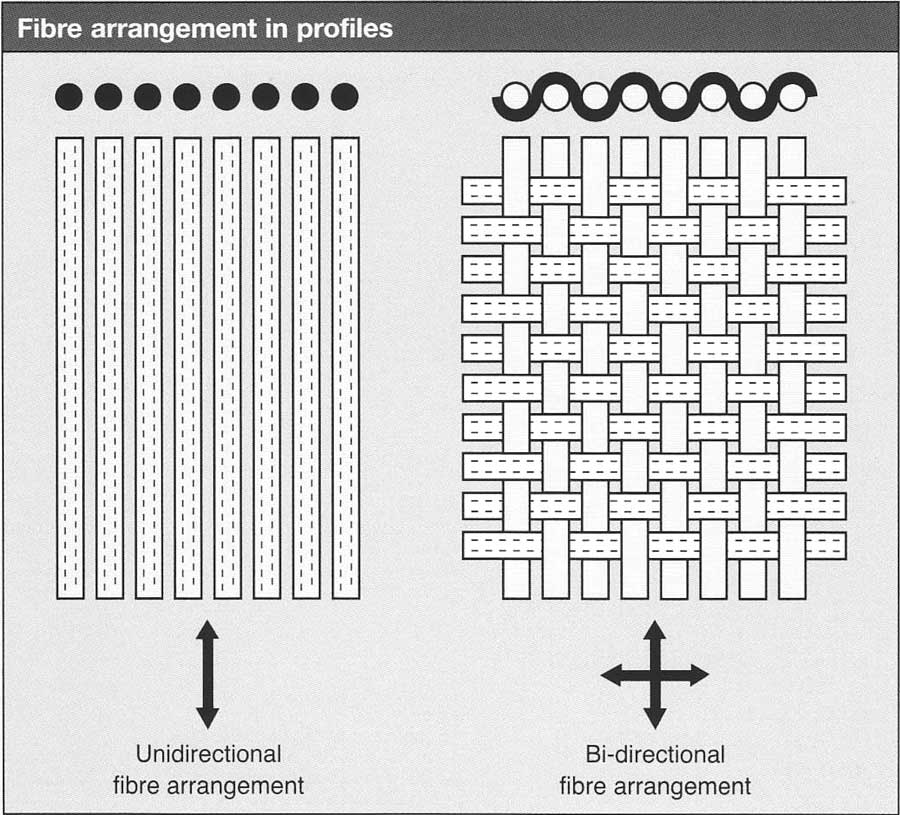
If you need your WACOSIT® profiles to have even better compressive and transverse strength, we can add additional compounds, fabrics and glass mats to your product.
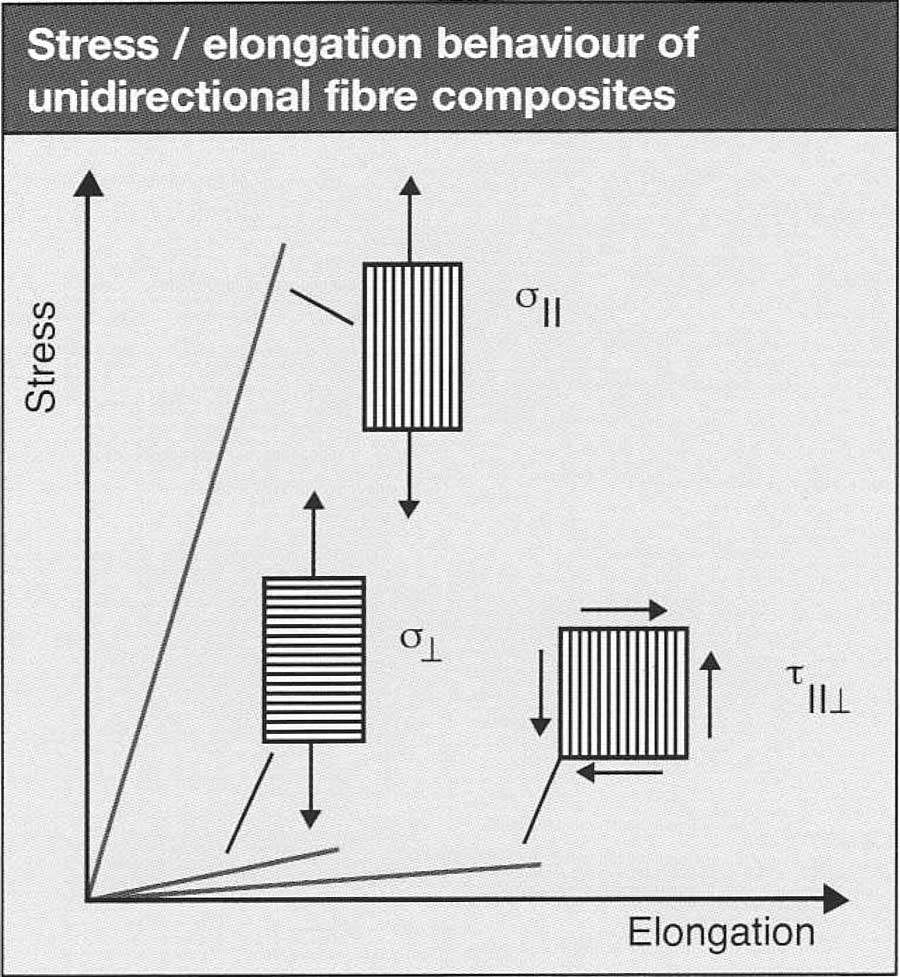
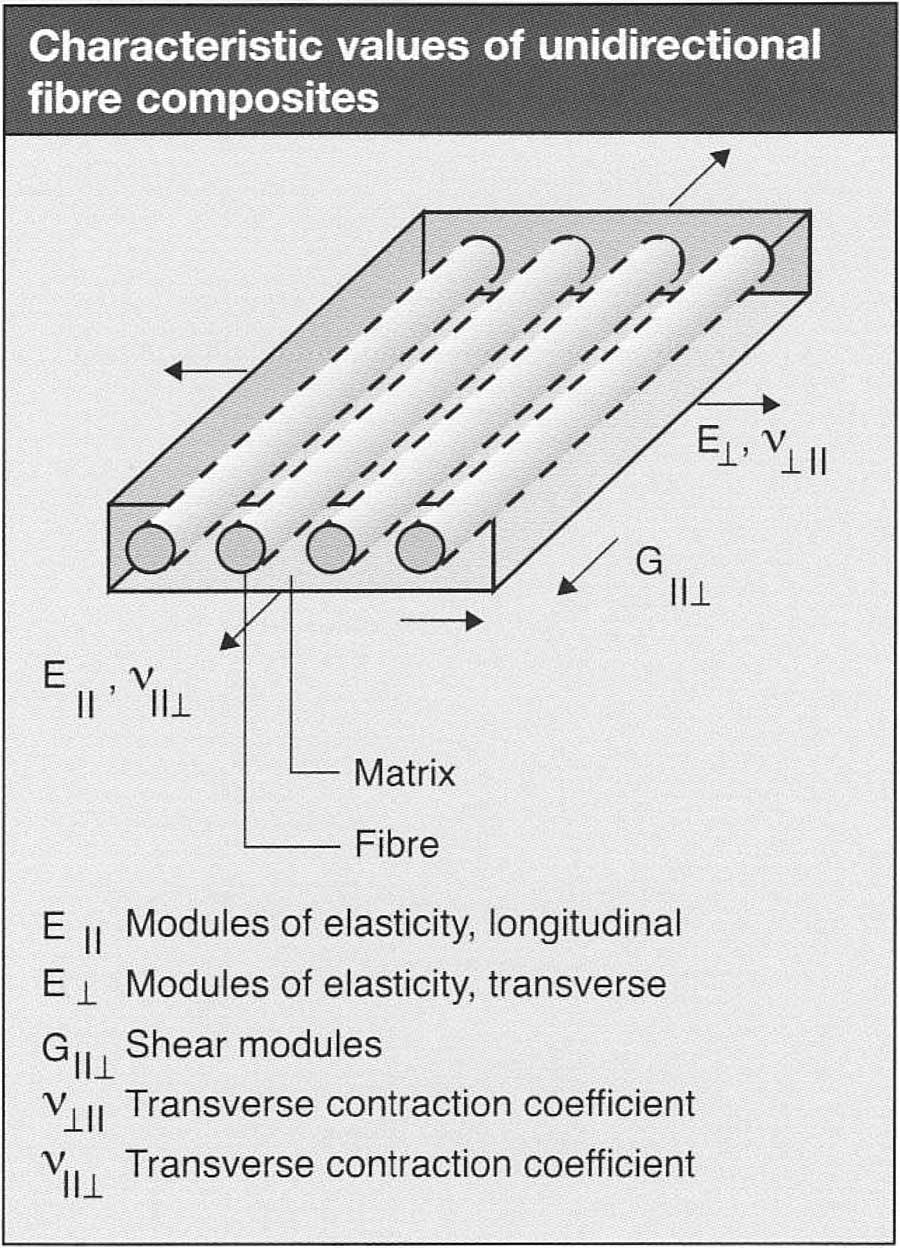
On the other hand, if you need improved mechanical properties, WACOSIT® profiles can be wound cross-wise as part of the pull-winding process.
To work out the elasticity of conventional (i.e., isotropic) materials, you usually need to know the modulus of elasticity (E), the modulus of rigidity (G), and Poisson’s ratio (n). For fibre-composite (i.e. anisotropic) materials, on other hand, you need four independent measurements, you get different longitudinal and transverse values.
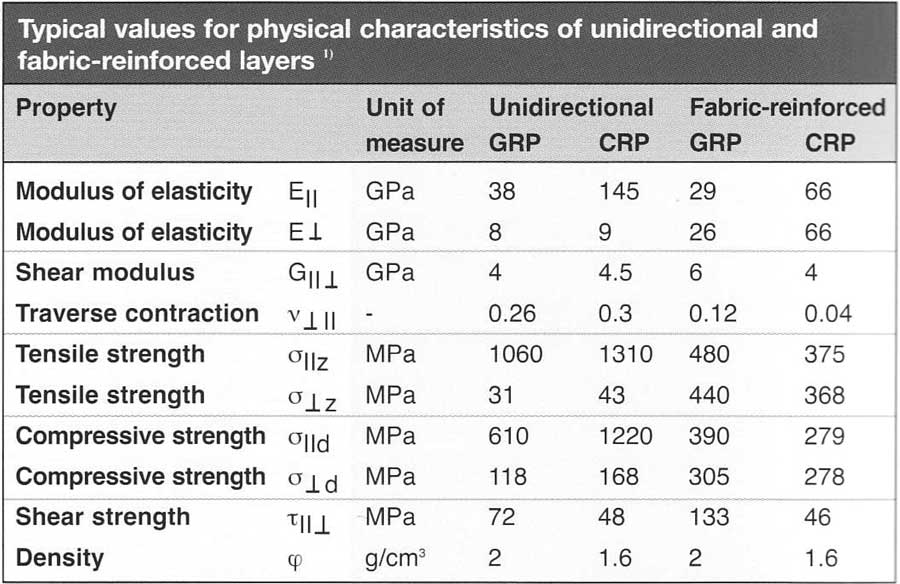
Raw materials
We use glass fibres, carbon fibres, aramid fibres and basalt fibres to reinforce our WACOSIT® profiles. There are various different types of fibres, designed for different requirements. We work with E-glass fibres (the most widely-used type), but we also use R, S, and T-glass fibres, which have enhanced mechanical properties.
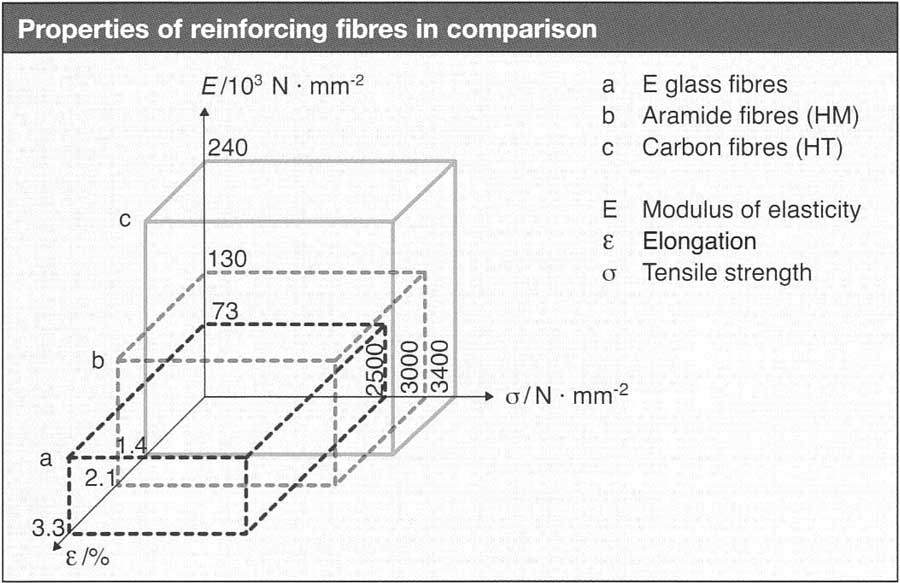
WACOSIT® profiles can be reinforced not just with rovings, but also with fabrics and composite blanks.
When they are subjected to load, glass fibres, carbon fibres and aramid fibres display more or less linear elasticity until they reach their breaking points. Pultruded profiles made with glass fibres, carbon fibres and aramid fibres display anisotropicproperties, i.e., they have preferred directions. This can prove a major advantage for a wide variety of construction-related tasks.
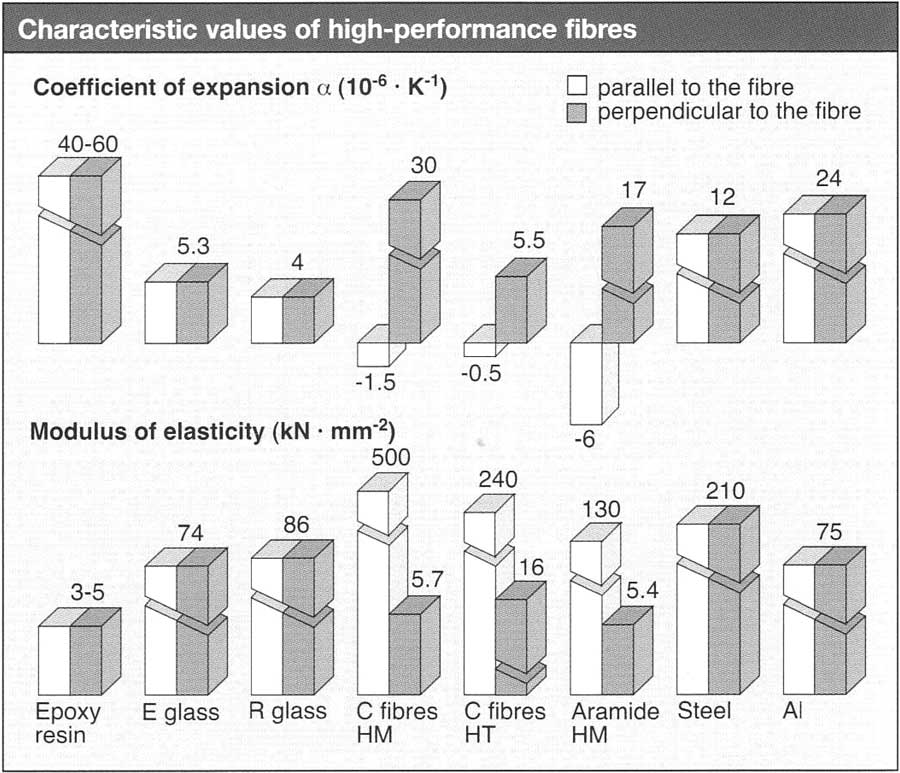
WACOSIT® profiles can be reinforced not just with rovings, but also with fabrics and composite blanks.
Processing instructions
WACOSIT® profiles are made of glass rovings, glass mats and glass fabric using the pultrusion technique. They are manufactured using unsaturated polyester, epoxy or vinylester resins.
Working with WACOSIT® profiles
WACOSIT® profiles are easy to work with using conventional carbide or diamond-tipped tools. They can be sawn, drilled, filed, milled or turned. The profiles should ideally be worked wet to reduce the amount of dust generated. If you work the profiles dry, the dust from the fibres will have to be vacuumed off. WACOSIT® profiles are also well suited for water jet cutting.
Be aware that, depending on the structure of the profiles, cut threads within the profiles may not be able to withstand high loads. With this in mind, pop rivets should ideally be used for joints.
If cut edges have not been glued or painted, they should be sealed before outdoor use to prevent water damage.
Gluing WACOSIT® profiles
WACOSIT®-profiles can be glued using standard 2-component epoxy adhesives (e.g., Araldite, 3M, etc.) Experience suggests that adhesives tend to work most effectively on slightly roughened surfaces.
However, you should always observe the instructions provided by the adhesive manufacturer when treating surfaces or applying adhesives.
Painting
WACOSIT® profiles can be painted with any standard paint or lacquer. Applying a primer coat usually improves the surface finish, and is essential if the profiles are to be used outdoors.
Storage
WACOSIT® profiles can be stored for as long as necessary. They should be stored in the original packaging, and in a dry place.
Why choose WACOSIT Pultruded Profiles and wound parts
There are plenty of reasons to choose WACOSIT®.
We produce pultruded, fibre-reinforced plastic profiles under the WACOSIT® brand. These profiles are built for specific applications and have a number of advantages over other profiles. Here are just a few of them:
WACOSIT® profiles deliver excellent mechanical, thermal and electrical performance. They are also resistant to corrosion, moisture and many chemicals. WACOSIT® is also 80% lighter than steel and around 30% lighter than aluminium.
WACOSIT® profiles stand out thanks to their extra-smooth surface finish and the fact they can be manufactured to extremely low tolerances. They are suitable for use at temperatures from 20°C to + 240°C. there is usually no need for any post-processing.
The WACOSIT® range offers a wide range of models, so you can find a made-to-measure product to suit your needs. They can also be supplied in custom colours and in weather-resistant or flame-retardant specification, as well as with conductive surfaces.
As WACOSIT® is an excellent insulator, it can provide a crucial advantage whenever preventing heat loss is a priority, such as in windows and doors, thermal breaks and cladding.
WACOSIT® profiles can be manufactured to any length; the only limiting factor is transport. This gives them a major advantage over profiles made from GFRP sheets.
WACOSIT® profiles are easy to work with. Parts to be glued on can be flitted with a “peel-ply” layer, meaning there’s no need to painstakingly file or grind the surface.
WACOSIT®‘s combination of a comprehensive range and full technical support – whatever your application – makes it the perfect choice for your construction projects.
Materials compared
